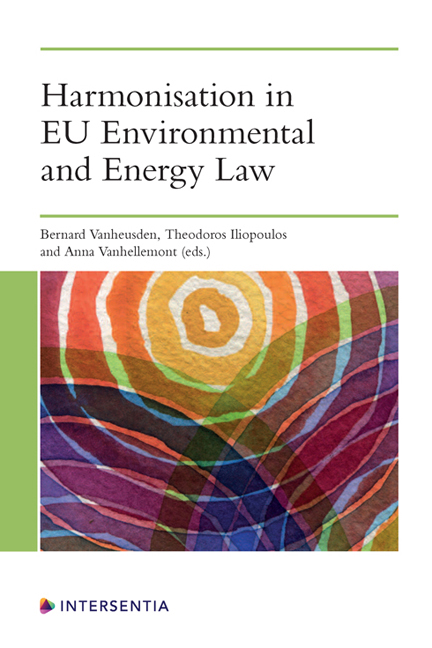Europeanisation of Renewable Energy Support Law: A Suspended Step Towards Harmonisation
Published online by Cambridge University Press: 26 May 2022
Summary
INTRODUCTION
In ancient Greek mythology, the goddess Harmonia (Ἁρμονί α), who personifies harmony, was the daughter of Ares, god of war, and Aphrodite, goddess of beauty and love. Extending the interpretation and the symbolism of the myth to the field of law, one could see harmonisation, that is, the action of bringing harmony between different legal systems, as denoting the reconciliation outcome of a process of dispute and cooperation, of discordance and understanding. In the end, harmonisation reconciles ‘the preoccupations and the interests of the various systems so as to avoid conflicts and clashes’.
Of course, such processes do not always end up with the desired result. In many cases, conflicts between different parties cannot be bridged, and harmonisation plans collapse or simply fade over time. This seems to have been the case with the plan for supranational harmonisation of renewable energy support law and of support schemes for renewable energy sources (hereinafter ‘RESSS’), which are instruments that Member States enact in order to promote renewable energy sources. But the recent enactment of the recast Renewable Energy Directive 2018/2001, often cited as ‘RED II’, might change the picture.
Since the mid- and late-1990s, when the first seeds of supranational harmonisation of renewable energy support law were planted, there has been little progress. The two first generations of secondary renewable energy law in 2001 and 2009 did not bring about any harmonisation, as it proved impossible for Member States and the Commission to reach an understanding. In response, in 2013 the Commission resorted to the term ‘Europeanisation of support for renewables’ and asked for more convergence in the field. But more recently, in December 2018, Directive 2018/2001 brought about certain interesting developments. The directive set down an EU collective target of a 32 per cent share of energy from renewable sources to be reached by 2030. This target is only binding for the EU as a whole; it is not converted into national targets, as was the case under the previous directive.
- Type
- Chapter
- Information
- Harmonisation in EU Environmental and Energy Law , pp. 237 - 254Publisher: IntersentiaPrint publication year: 2022



